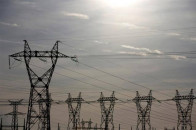Loosening Asia ties: Trump pulls US out of Pacific trade deal
Says trade deal would have damaged the country’s manufacturing

US President Donald Trump at a campaign event at the Greater Columbus Convention Center in Columbus, Ohio August 1, 2016. PHOTO: REUTERS
Fulfilling a campaign pledge to end American involvement in the 2015 pact, Trump signed an executive order in the Oval Office pulling the United States from the 12-nation TPP.
“Great thing for the American worker,” Trump said as he signed the order on his third full day in office.
The Republican says the trade deal would have damaged US manufacturing. The accord, backed heavily by US business, was negotiated by former President Barack Obama’s administration but never approved by Congress.
It had been the main economic pillar of the Obama administration’s ‘pivot’ to the Asia-Pacific region to counter China.
Trump has sparked worries in Japan and elsewhere in the Asia-Pacific with his opposition to the TPP and his campaign demands for US allies to pay more for their security.
Harry Kazianis, Director of Defense Studies at the Centre for the National Interest think tank in Washington, said Trump must now find an alternative way to reassure allies in Asia.
“This could include multiple bilateral trade agreements. Japan, Taiwan and Vietnam should be approached first as they are key to any new Asia strategy that President Trump will enact,” he said.
The new president also met with a dozen American manufacturers at the White House on Monday, pledging to slash regulations and cut corporate taxes, but warning them he would take action on trade deals he felt were unfair.
Published in The Express Tribune, January 24th, 2017.



















COMMENTS
Comments are moderated and generally will be posted if they are on-topic and not abusive.
For more information, please see our Comments FAQ